Mohammad Hossein Fazel Zarandi
Interval Type-2 Enhanced Possibilistic Fuzzy C-Means Clustering for Gene Expression Data Analysis
Jan 01, 2021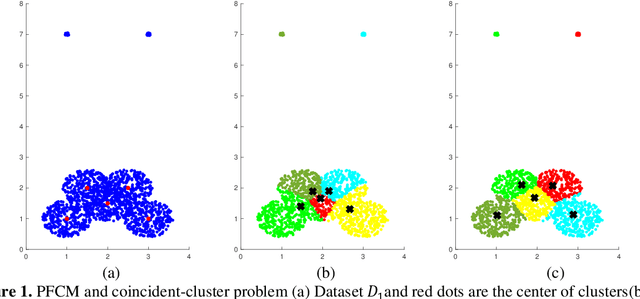

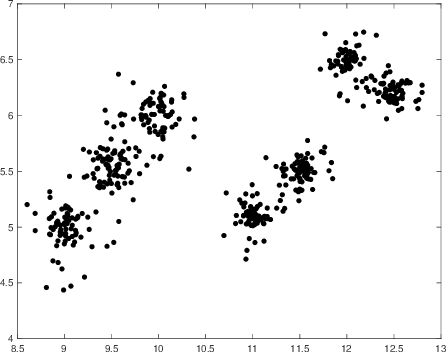

Abstract:Both FCM and PCM clustering methods have been widely applied to pattern recognition and data clustering. Nevertheless, FCM is sensitive to noise and PCM occasionally generates coincident clusters. PFCM is an extension of the PCM model by combining FCM and PCM, but this method still suffers from the weaknesses of PCM and FCM. In the current paper, the weaknesses of the PFCM algorithm are corrected and the enhanced possibilistic fuzzy c-means (EPFCM) clustering algorithm is presented. EPFCM can still be sensitive to noise. Therefore, we propose an interval type-2 enhanced possibilistic fuzzy c-means (IT2EPFCM) clustering method by utilizing two fuzzifiers $(m_1, m_2)$ for fuzzy memberships and two fuzzifiers $({\theta}_1, {\theta}_2)$ for possibilistic typicalities. Our computational results show the superiority of the proposed approaches compared with several state-of-the-art techniques in the literature. Finally, the proposed methods are implemented for analyzing microarray gene expression data.
A New Validity Index for Fuzzy-Possibilistic C-Means Clustering
May 19, 2020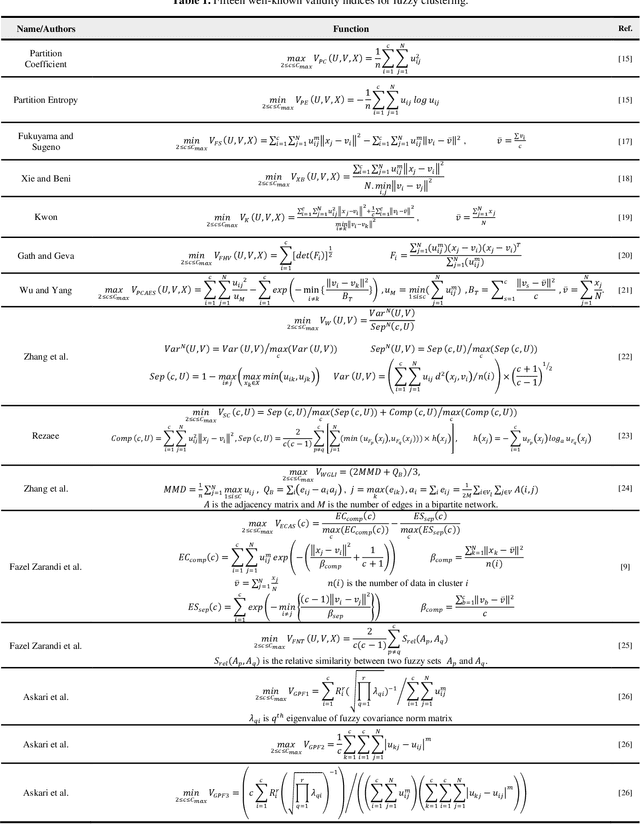
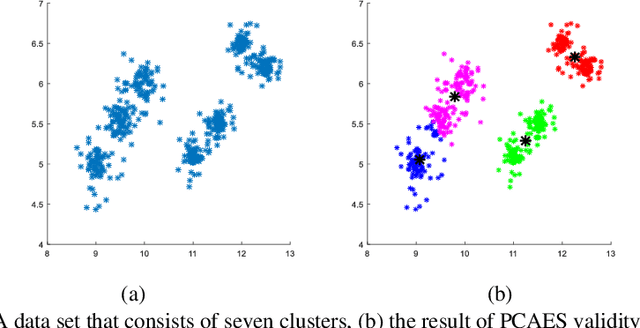
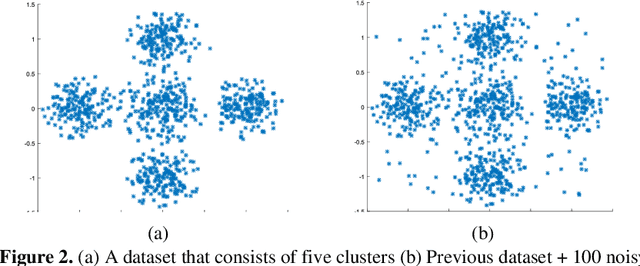
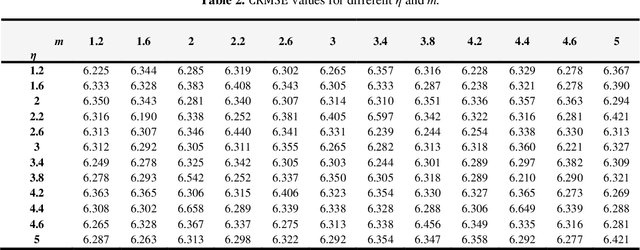
Abstract:In some complicated datasets, due to the presence of noisy data points and outliers, cluster validity indices can give conflicting results in determining the optimal number of clusters. This paper presents a new validity index for fuzzy-possibilistic c-means clustering called Fuzzy-Possibilistic (FP) index, which works well in the presence of clusters that vary in shape and density. Moreover, FPCM like most of the clustering algorithms is susceptible to some initial parameters. In this regard, in addition to the number of clusters, FPCM requires a priori selection of the degree of fuzziness and the degree of typicality. Therefore, we presented an efficient procedure for determining their optimal values. The proposed approach has been evaluated using several synthetic and real-world datasets. Final computational results demonstrate the capabilities and reliability of the proposed approach compared with several well-known fuzzy validity indices in the literature. Furthermore, to clarify the ability of the proposed method in real applications, the proposed method is implemented in microarray gene expression data clustering and medical image segmentation.
 Add to Chrome
Add to Chrome Add to Firefox
Add to Firefox Add to Edge
Add to Edge